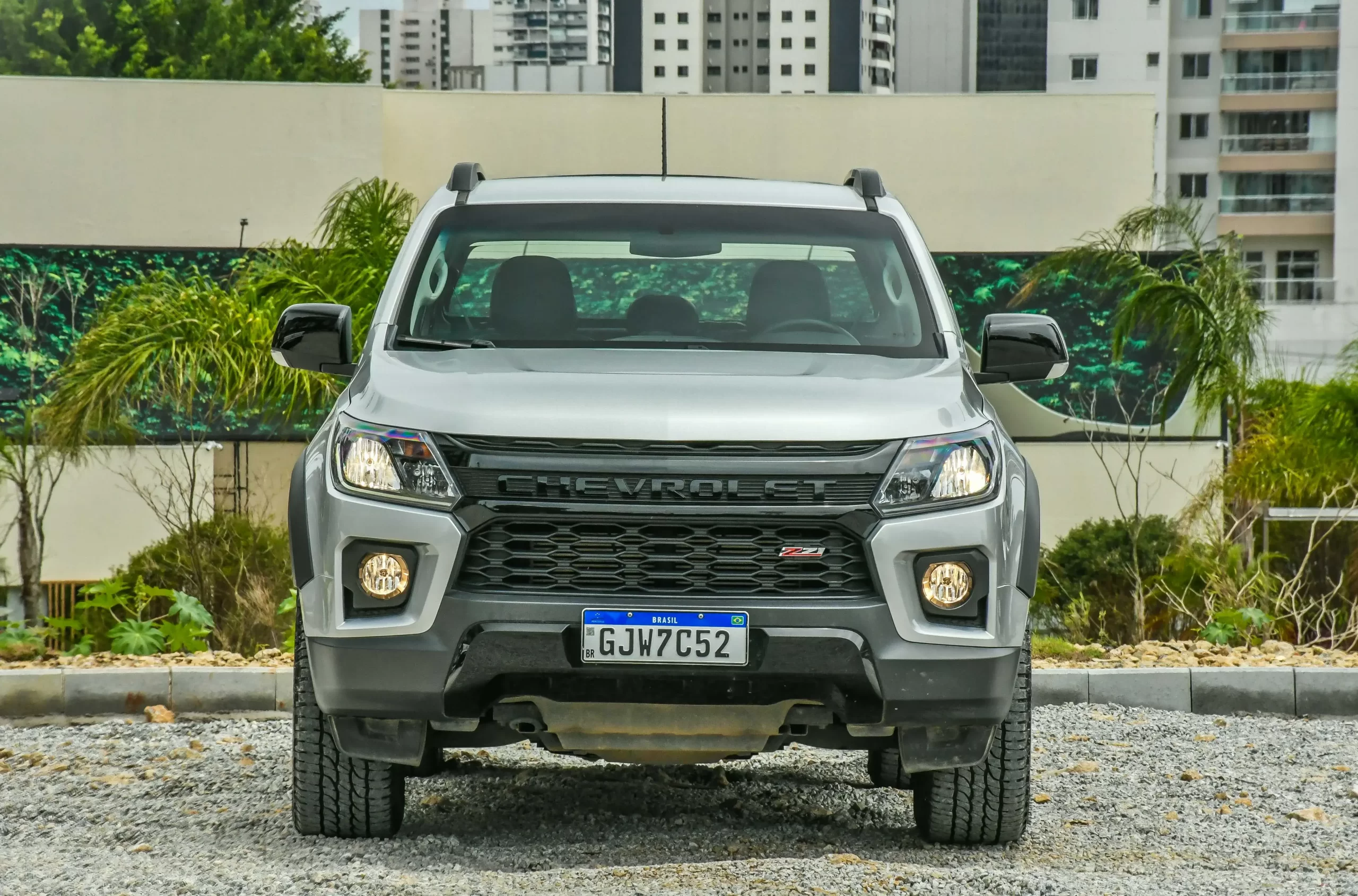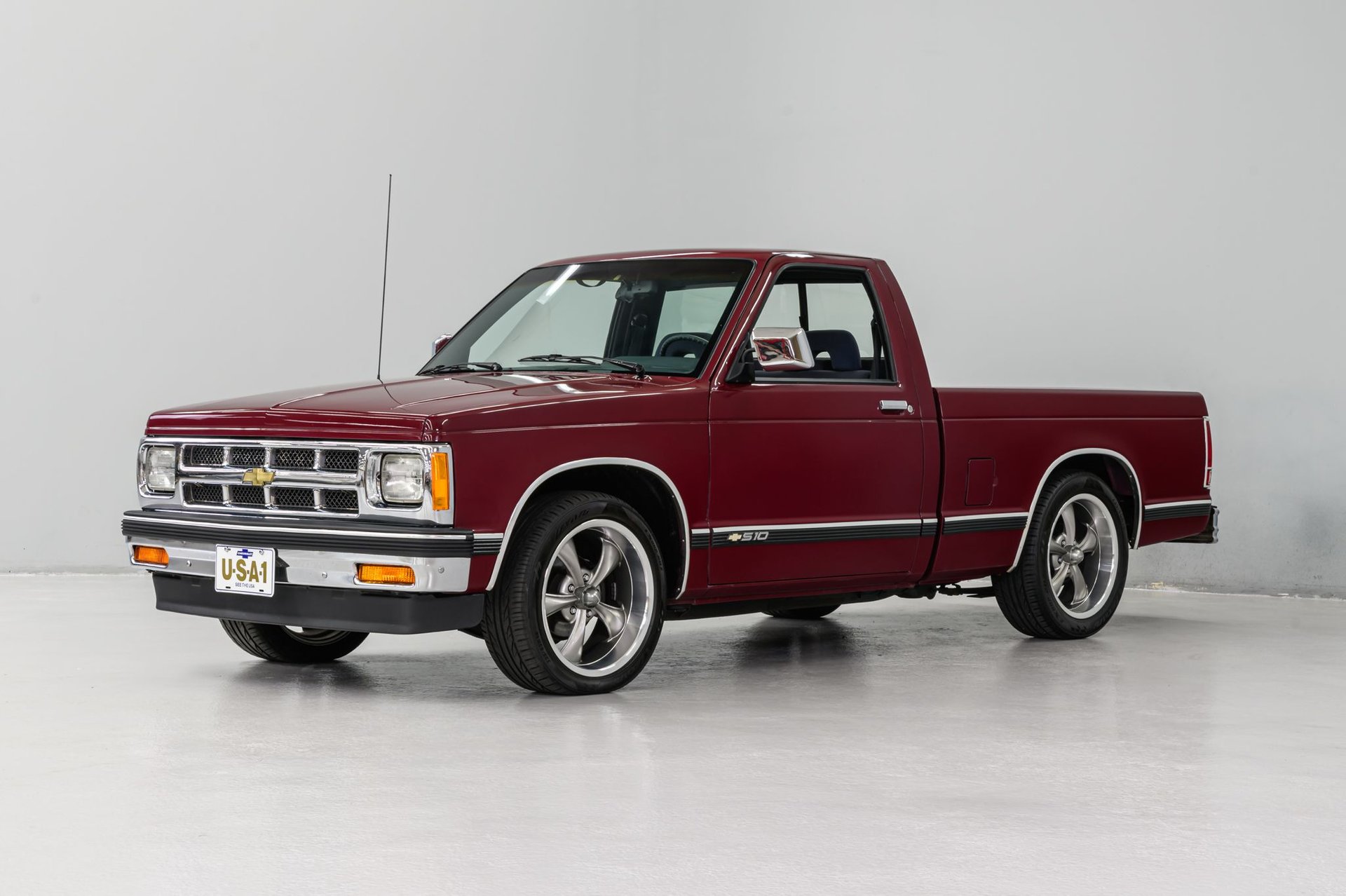S10 Drag Truck For Sale: Your Ultimate Guide to Buying a Race-Ready Beast typestruckssale.com
Introduction: The Enduring Appeal of the S10 Drag Truck
For decades, the Chevrolet S10 pickup truck has held an iconic status in the world of drag racing. Far from its humble origins as a utilitarian workhorse, the S10 has been transformed into a formidable quarter-mile contender, synonymous with blistering speeds and impressive performance. When you hear "S10 Drag Truck For Sale," it immediately conjures images of lightweight, V8-powered machines purpose-built to conquer the strip. Its compact size, robust frame, and unparalleled aftermarket support have cemented its position as one of the most popular and versatile platforms for racers across various classes.
S10 Drag Truck For Sale: Your Ultimate Guide to Buying a Race-Ready Beast
Whether you’re a seasoned drag racer looking for your next competitive edge, a bracket racer seeking consistency, or an aspiring enthusiast ready to dive into the thrilling world of high-performance pickups, an S10 drag truck offers an accessible and potent entry point. This comprehensive guide will delve into everything you need to know about S10 drag trucks for sale, from understanding their core components and market variations to practical advice on how to make an informed purchase.
Why the S10 Reigns Supreme in Drag Racing
The S10’s dominance in drag racing is no accident; it stems from a perfect storm of inherent advantages:
- Lightweight Chassis: Compared to full-size trucks, the S10’s relatively light unibody and frame make it an excellent starting point for weight reduction, crucial for drag racing performance.
- Compact Size: Its shorter wheelbase and narrower body contribute to better aerodynamics and easier handling on the strip, particularly when launching.
- Abundant Aftermarket Support: The sheer popularity of the S10 has led to an explosion of aftermarket parts. From engine swap kits and suspension components to specialized chassis parts and safety equipment, virtually anything you need to build or modify an S10 drag truck is readily available. This also translates to a large community of builders and experts.
- Versatility: The S10 platform can be configured for a wide range of racing classes, from mild street/strip setups to extreme Pro Mod machines, making it adaptable to different budgets and performance goals.
- Affordability: While a top-tier S10 drag truck can be expensive, the base platform itself is often more affordable to acquire than many other popular race car chassis, making it a budget-friendly option for getting into the sport.
These factors combine to make the S10 not just a good choice, but often the ideal choice for anyone looking to build or buy a dedicated drag truck.
Anatomy of a Race-Ready S10: Key Components to Consider
Understanding the core components of a purpose-built S10 drag truck is crucial when evaluating one for sale. These modifications transform a humble pickup into a quarter-mile weapon:
- Engine: The heart of any drag truck. While some rare builds might retain an inline-four or V6, the vast majority feature a V8 swap. Common choices include:
- Small Block Chevrolet (SBC): A classic, well-understood platform with endless aftermarket support.
- Big Block Chevrolet (BBC): For maximum displacement and raw power.
- LS-series Engines: Modern, lightweight, incredibly powerful, and highly tunable, ranging from budget 5.3L to high-horsepower 7.0L and forced induction variants.
- Power Adders: Turbochargers (single or twin), superchargers (roots, centrifugal, screw), and nitrous oxide systems are common for boosting horsepower into the four-digit range.
- Transmission: Designed for rapid power transfer and durability.
- Automatic: Powerglide (two-speed, common for high HP), Turbo 400 (three-speed, robust).
- Manual: Less common but used in specific classes, often highly specialized units.
- Torque Converter: Matched to the engine’s power band and vehicle weight for optimal launch.
- Rear End: Critical for handling massive torque.
- Ford 9-inch: The gold standard for drag racing due to its strength, ease of gear changes, and aftermarket support.
- Dana 60: Another strong option.
- Spool or Locker: Ensures both rear wheels receive equal power.
- Suspension: Engineered for optimal weight transfer and traction.
- Ladder Bars or 4-Link: Essential for controlling rear axle movement and tuning launch characteristics.
- Coil-over Shocks: Adjustable for ride height and damping.
- Wheelie Bars: Prevent excessive front-end lift and maintain stability.
- Chassis & Safety: Paramount for high-speed racing.
- Roll Cage: Mandated by racing organizations (NHRA, IHRA) based on elapsed time (ET) performance. Look for a current certification tag (e.g., 8.50, 7.50, 25.5, 25.3).
- Frame Connectors: Stiffen the chassis to prevent flex.
- Wheel Tubs: Allow for wider rear tires (slicks).
- Fuel Cell: Often relocated for weight distribution and safety.
- Fire Suppression System, Window Nets, Racing Seats, Multi-point Harnesses: All essential safety features.
- Brakes: Lightweight, high-performance drag brakes are common, designed for stopping efficiently after a high-speed pass.
- Wheels & Tires: Lightweight racing wheels with drag slicks at the rear and skinnier, low-rolling-resistance tires at the front.
- Electronics:
- Ignition System: High-output systems like MSD.
- Data Logger: Records engine parameters, G-forces, and more, crucial for tuning.
- Wiring: Clean, robust, and often custom-built for racing applications.
The "S10 Drag Truck For Sale" market is diverse, catering to different budgets, skill levels, and racing ambitions. Here’s a breakdown of common categories:
- Street/Strip Hybrids: These trucks often retain some street legality, though usually with minimal creature comforts. They might feature a powerful V8, upgraded suspension, and a roll bar (not full cage). They are great for weekend fun and occasional track days, typically running in the 10-12 second range.
- Bracket Racers: Purpose-built for consistency, these trucks are optimized to run specific, repeatable elapsed times. They feature full roll cages, optimized suspensions, and reliable, often naturally aspirated or nitrous-assisted engines. They prioritize consistency over absolute power.
- Grudge/No-Time Trucks: Built for head-to-head, often secretive, racing where ETs aren’t disclosed. These are typically highly modified, extremely powerful trucks with advanced suspension and engine management, designed to hook hard and go fast without revealing their full potential.
- Pro Street/Outlaw Trucks: These are serious machines, often running low 8s or even 7s. They feature extreme horsepower, extensive chassis modifications (including full tubs and certified cages), and lightweight fiberglass or carbon fiber body panels, while still resembling an S10.
- Pro Mod/Extreme Trucks: At the pinnacle of S10 drag racing, these are often tube-chassis cars with composite S10 bodies. They feature monster engines (often blown or twin-turbocharged), highly advanced suspensions, and cutting-edge electronics, capable of 6-second or even faster passes. These are professional-level race vehicles.
Understanding these categories will help you narrow down your search and set realistic expectations for performance and price.
The Buyer’s Playbook: What to Look For Before You Buy
Purchasing an S10 drag truck requires meticulous inspection and due diligence. Here’s what to prioritize:
- Documentation is Key: Ask for build sheets, receipts for major components, dyno sheets, chassis certifications (roll cage tags), and most importantly, a logbook if it’s a dedicated race vehicle. A well-maintained logbook details every pass, tuning changes, and maintenance, providing invaluable insight into the truck’s history and performance.
- Chassis Integrity: Thoroughly inspect the frame for rust, cracks, or signs of accident damage. Pay close attention to welds – they should be clean and professional. Verify the roll cage certification tag is current and matches the expected performance level. Check for proper alignment and straightness.
- Engine & Drivetrain Health: Look for fluid leaks (oil, transmission, rear end). Ask about recent rebuilds or refresh cycles. If possible, perform a compression or leak-down test. Listen for unusual noises during startup and operation. Inquire about the maintenance schedule.
- Safety Equipment: Check expiry dates on harnesses, fire suppression systems, and window nets. Ensure all safety equipment is properly installed and meets current racing regulations for the class you intend to run.
- Electrical System: A clean, well-organized wiring harness is a sign of a professional build. Look for proper grounding, secure connections, and neatly routed wires.
- Seller’s Reputation: If possible, research the seller. Are they known in the racing community? Have they successfully campaigned this truck? Community feedback can be invaluable.
- Match Your Goals: Does the truck fit your intended racing class, budget, and skill level? Don’t overbuy or underbuy. A pro-mod truck might be too complex for a beginner, while a street/strip truck might quickly be outgrown.
- Pre-Purchase Inspection: For significant investments, consider hiring a reputable chassis builder or experienced drag racer to perform a pre-purchase inspection. Their expert eye can spot issues you might miss.
Making the Deal: Tips for a Smooth Transaction
Once you’ve found a promising S10 drag truck:
- Negotiation: Be prepared to negotiate. Research comparable sales and be firm but fair. Understand that specialized vehicles often have unique valuations.
- Title and Registration: Many dedicated drag trucks do not have traditional street titles; they might have a "bill of sale" or "salvage title." Understand the legal implications for your state and intended use. If you plan any street driving, ensure it can be legally registered.
- Transportation: Drag trucks are not street-legal (or practical) for long distances. Plan for proper transportation, usually via an enclosed car hauler.
- Post-Purchase Checks: Even after buying, perform your own checks. Change fluids, inspect critical fasteners, and familiarize yourself with all systems before hitting the track.
Potential Pitfalls and How to Avoid Them
Buying a used race vehicle comes with inherent risks. Be aware of:
- Hidden Damage: Crash damage, frame twists, or poor repairs can be masked. Solution: Thorough visual inspection and professional assessment.
- Outdated Safety Equipment: Expired belts or fire systems can lead to disqualification or, worse, compromise safety. Solution: Check all dates and be prepared to replace.
- Mismatched Components: Sometimes builds are a hodgepodge of incompatible parts, leading to performance issues or premature wear. Solution: Research components, ask for build sheets, and understand the synergy between parts.
- Lack of Clear As mentioned, this can be an issue if you ever want to register it. Solution: Clarify title status upfront and understand implications.
S10 Drag Truck For Sale: Price Guide
The price of an S10 drag truck can vary wildly based on its build quality, components, engine type, level of certification, and race history. Here’s an estimated price guide:
| Category | Engine Type | Transmission | Rear End | Chassis/Safety | Estimated Price Range (USD) | Key Features |
|---|---|---|---|---|---|---|
| Street/Strip | LS/SBC (NA or mild boost) | Auto (4L60/80) | 10/12-bolt | Roll Bar | $15,000 – $35,000 | Mild modifications, mostly steel body, usable on street, decent ETs. |
| Bracket Racer | SBC/BBC (NA or Nitrous) | Powerglide/TH400 | Ford 9-inch | 8.50/7.50 Cage | $30,000 – $60,000 | Consistent, reliable, often fiberglass front clip, tubs, purpose-built. |
| Grudge/Outlaw 275 | LS/BBC/SBC (Turbo/Supercharged) | Powerglide/TH400 | Ford 9-inch | 25.5/25.3 Cage | $50,000 – $120,000+ | High horsepower, advanced suspension, lightweight body panels, data logging. |
| Pro Street/Mod Lite | Extreme BBC/LS (Forced Ind.) | ProMod 2-speed | Fabricated 9-inch | 25.3 Cage | $100,000 – $250,000+ | Custom chassis, extensive carbon fiber/fiberglass, top-tier components. |
| Rolling Chassis | (No Engine/Trans) | (No Engine/Trans) | Ford 9-inch | Certified Cage | $15,000 – $75,000 | Perfect for custom build, varying levels of completion, no drivetrain. |
Disclaimer: These are approximate ranges and can fluctuate significantly based on specific components, builder reputation, condition, and market demand. A well-known, championship-winning truck could command much higher prices.
Frequently Asked Questions (FAQ)
Q: Can an S10 drag truck be street legal?
A: Most dedicated S10 drag trucks, especially those with full roll cages, tubs, and race-specific components, are not street legal due to safety regulations, emissions, and lack of standard road features. Street/strip hybrids might retain some street legality, but it varies by state.
Q: What’s the typical horsepower of an S10 drag truck?
A: Horsepower varies hugely. A mild street/strip S10 might have 400-600 hp. A serious bracket or grudge truck could be 800-1500+ hp. Top-tier Pro Mod S10s can easily exceed 2,500-3,500+ hp with forced induction.
Q: What certification does a roll cage need?
A: Roll cage certification is based on the elapsed time (ET) the vehicle is capable of. Common NHRA/IHRA certifications include 8.50 (for trucks running 8.50 seconds or slower), 7.50, 25.5, and 25.3 (for increasingly faster and more extreme vehicles). Always verify the current certification tag.
Q: Is it cheaper to build or buy an S10 drag truck?
A: Generally, it is almost always cheaper to buy a completed S10 drag truck than to build one from scratch. The labor, expertise, and cost of individual components quickly add up, often exceeding the resale value of a finished project.
Q: What are common engine swaps for S10 drag trucks?
A: Small Block Chevrolet (SBC), Big Block Chevrolet (BBC), and modern LS-series engines (5.3L, 6.0L, 6.2L, 7.0L) are by far the most common choices due to their power potential, aftermarket support, and relatively easy fitment.
Q: How important is a logbook when buying a drag truck?
A: Extremely important. A detailed logbook shows the truck’s racing history, maintenance schedule, tuning changes, and any issues encountered. It’s a transparent record that speaks volumes about how well the vehicle has been cared for and campaigned.
Conclusion: Your Journey to the Starting Line
The allure of the S10 drag truck is undeniable. It represents an ideal blend of affordability, performance potential, and a vibrant community. Whether you’re chasing record-breaking times or simply the thrill of consistent bracket racing, an S10 offers a proven platform to achieve your drag racing dreams. By understanding the various types of trucks available, knowing what to look for during inspection, and navigating the buying process with diligence, you can confidently acquire a race-ready S10 that will provide years of excitement and competition. Your journey to the starting line, in the cockpit of an S10 drag truck, is just a well-informed purchase away.



